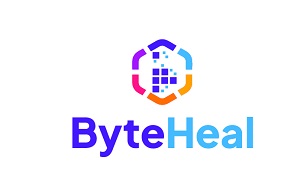Introduction
Software health is crucial for ensuring the integrity and reliability of any software system. Just like our physical health, software health requires regular maintenance and best practices to prevent issues and optimize performance. In this blog post, we will explore some of the best practices that can help you maintain software integrity and keep your systems running smoothly.
1. Regular Updates and Patches
Keeping your software up to date is essential for maintaining its integrity. Software developers often release updates and patches to address security vulnerabilities, fix bugs, and improve performance. Regularly check for updates and install them promptly to ensure your software remains secure and reliable.
2. Code Reviews
Performing regular code reviews is an effective way to identify and fix potential issues in your software. Code reviews involve a thorough examination of the codebase by experienced developers to ensure adherence to coding standards, identify bugs, and improve overall code quality. This practice helps in maintaining the integrity of the software and reducing the likelihood of errors.
3. Testing and Quality Assurance
Comprehensive testing and quality assurance processes are vital for maintaining software integrity. Implement automated and manual testing techniques to identify and fix bugs, validate functionality, and ensure the software meets the desired requirements. This includes unit testing, integration testing, system testing, and user acceptance testing.
4. Secure Coding Practices
Adopting secure coding practices is crucial for maintaining software integrity and preventing security breaches. Follow coding guidelines and best practices to minimize vulnerabilities such as input validation, secure authentication, and proper error handling. Regularly educate your development team about the latest security threats and ensure they implement appropriate security measures.
5. Version Control
Utilize version control systems such as Git or SVN to manage your software’s source code. Version control allows you to track changes, collaborate with team members, and revert to previous versions if necessary. This practice ensures the integrity of your software’s source code and facilitates efficient development processes.
6. Secure Deployment and Configuration
When deploying your software, ensure that the environment is secure and properly configured. Implement secure network protocols, firewall rules, and access controls to protect your.
Summary

Software integrity is essential for the smooth functioning of any software system. By following best practices, you can ensure that your software remains healthy and reliable. In this blog post, we discussed some key practices for maintaining software integrity, including:
- Regularly updating software and applying patches
- Implementing secure coding practices
- Performing thorough testing and quality assurance
- Monitoring and analyzing software performance
- Establishing backup and recovery mechanisms
By incorporating these practices into your software deve blog here lopment and maintenance processes, you can minimize vulnerabilities, enhance performance, and improve the overall health of your software systems.
- Q: What is software health?
- A: Software health refers to the overall condition and integrity of software, including its performance, security, and stability.
- Q: Why is maintaining software integrity important?
- A: Maintaining software integrity is crucial to ensure that the software functions as intended, remains secure against vulnerabilities, and delivers a positive user experience.
- Q: What are some best practices for maintaining software integrity?
- A: Some best practices include regularly updating software with patches and security fixes, conducting thorough testing and quality assurance, implementing secure coding practices, and monitoring for any potential issues or vulnerabilities.
- Q: How often should software updates be performed?
- A: Software updates should be performed regularly, ideally as soon as new updates or patches are released by the software vendor. This helps to address any security vulnerabilities and ensures that the software remains up to date with the latest features and improvements.
- Q: What is the role of testing in maintaining software integrity?
- A: Testing plays a crucial role in maintaining software integrity by identifying and fixing any bugs, errors, or issues before the software is deployed. It helps to ensure that the software functions correctly, meets the desired requirements, and delivers a high-quality user experience.
- Q: How can secure coding practices contribute to software integrity?
- A: Secure coding practices, such as input validation, proper error handling, and using secure libraries, help to prevent common vulnerabilities like injection attacks, buffer overflows, and cross-site scripting. By following these practices, software developers can reduce the risk of security breaches and maintain the integrity of the software.
- Q: What is the importance of monitoring software health?
- A: Monitoring software health allows for proactive identification and resolution of any issues or vulnerabilities. It helps to ensure that the software remains stable, performs optimally, and continues to meet the needs of its users.
- Q: Are there any tools available for maintaining software integrity?
- A: Yes, there are various tools available, such as code analyzers, vulnerability scanners, and performance monitoring tools, that can assist in maintaining software integrity

Welcome to my website! My name is David Winning, and I am a professional Software Optimization Consultant. With a passion for optimizing systems, finding malware solutions, promoting digital wellness, and ensuring software health, I am dedicated to helping individuals and businesses achieve peak performance and security in their digital environments.
Category: Software Health

